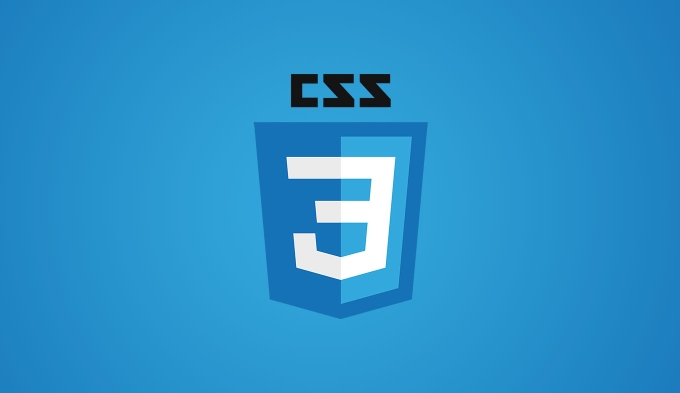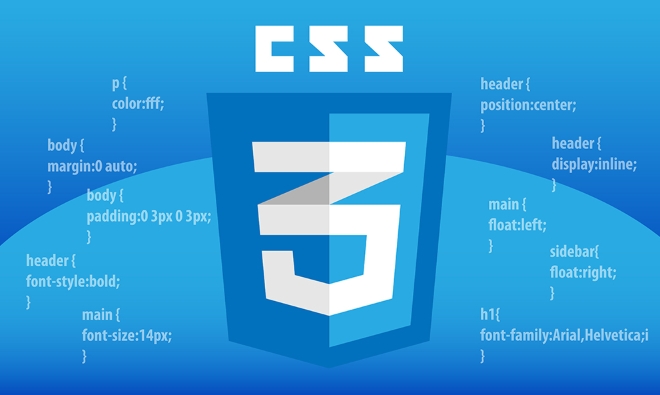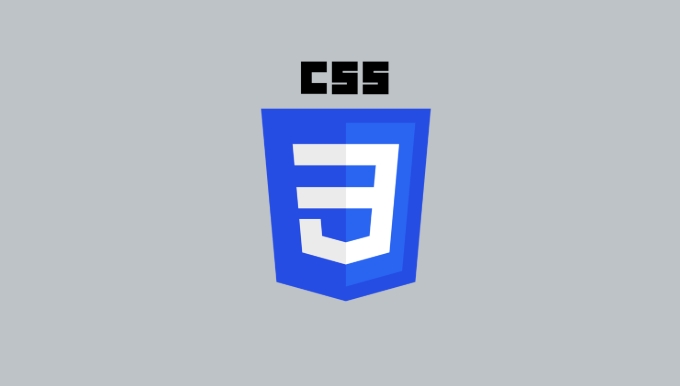To use CSS attributes to control variable font styles, you need to master four core methods. 1. Use font-weight to set the numerical values ??from 1 to 1000 to finely control the word weight, such as p { font-weight: 450; }; 2. Use font-stretch to adjust the font width in percentage, such as .title { font-stretch: 110%; }; 3. Use font-style to combine font-variation-settings to achieve tilt or custom axis adjustment, such as .emphasis { font-variation-settings: "slnt" 20; }; 4. Combine multi-axis parameters to optimize visual effects, such as .custom-style to set the word weight, width and custom axis at the same time, but it is necessary to avoid affecting readability. These properties provide a high level of control over variable fonts and are suitable for different design needs.

Using CSS attributes to control the style of variable fonts is actually not complicated. The key is to understand several core attributes and their relationship. Variable Fonts are more flexible than traditional fonts. They can achieve multiple changes in word weight, width, tilt, etc. with just one font file, but how to truly "use" it well in a web page still depends on some specific CSS attributes.

1. Use font-weight to control the font thickness range
While you may already be familiar with font-weight , it works more granularly in variable fonts. You can use values ??from 1 to 1000 to define word weights, not just normal or bold .

for example:
p {
font-weight: 450;
}
h1 {
font-weight: 780;
}This allows for more detailed adjustment of thickness and makes the design look more natural. Some fonts even support continuous transitions, which means you can change the font weight dynamically through animation or interaction.

2. Set font-stretch to achieve font width adjustment
font-stretch allows you to stretch or compress the width of a font, usually expressed in percentages, such as 50% to 200% . This property is ideal for optimizing the typography space, especially in responsive layouts.
Example:
.title {
font-stretch: 110%;
}
.narrow-text {
font-stretch: 85%;
} Note: Not all fonts support a complete font-stretch range, it is best to check the font document before use.
3. Use font-style and font-variation-settings to implement tilt and custom axis
In addition to the common italic , some variable fonts also support custom italic angles or other style variations. At this time, font-variation-settings is needed.
For example:
.emphasis {
font-style: italic;
font-variation-settings: "slnt" 20;
} Here "slnt" is the identifier of the slope axis, and the larger the value, the more tilted the font. Of course, other custom axes can also be controlled, such as "opsz" (optical size), "wdth" (width), etc.
However, it should be noted that font-variation-settings is more like a "understanding API" and is suitable for high-end customization. If you just want to simply set italics or thickness, it is recommended to use standard attributes first.
4. Use multiple axes in combination to get the best results
One of the charms of variable fonts is multi-axis linkage. You can adjust multiple parameters such as word weight, width, slope, etc. at the same time to obtain a richer visual level.
for example:
.custom-style {
font-weight: 600;
font-stretch: 90%;
font-variation-settings: "slnt" 10, "opsz" 14;
}This approach is suitable for scenarios where a highly customized font style is required, such as title or brand copywriting. But be careful not to over-adjust to avoid affecting readability.
Overall, CSS provides tools that are powerful enough to control the performance of variable fonts. As long as you understand the role of each attribute and use it reasonably in combination with actual needs, you can easily give full play to the advantages of variable fonts. Basically all that is, it's not difficult but there are a lot of details.
The above is the detailed content of Styling Variable Fonts using CSS properties. For more information, please follow other related articles on the PHP Chinese website!

Hot AI Tools

Undress AI Tool
Undress images for free

Undresser.AI Undress
AI-powered app for creating realistic nude photos

AI Clothes Remover
Online AI tool for removing clothes from photos.

Clothoff.io
AI clothes remover

Video Face Swap
Swap faces in any video effortlessly with our completely free AI face swap tool!

Hot Article

Hot Tools

Notepad++7.3.1
Easy-to-use and free code editor

SublimeText3 Chinese version
Chinese version, very easy to use

Zend Studio 13.0.1
Powerful PHP integrated development environment

Dreamweaver CS6
Visual web development tools

SublimeText3 Mac version
God-level code editing software (SublimeText3)
 CSS tutorial for creating loading spinners and animations
Jul 07, 2025 am 12:07 AM
CSS tutorial for creating loading spinners and animations
Jul 07, 2025 am 12:07 AM
There are three ways to create a CSS loading rotator: 1. Use the basic rotator of borders to achieve simple animation through HTML and CSS; 2. Use a custom rotator of multiple points to achieve the jump effect through different delay times; 3. Add a rotator in the button and switch classes through JavaScript to display the loading status. Each approach emphasizes the importance of design details such as color, size, accessibility and performance optimization to enhance the user experience.
 Addressing CSS Browser Compatibility issues and prefixes
Jul 07, 2025 am 01:44 AM
Addressing CSS Browser Compatibility issues and prefixes
Jul 07, 2025 am 01:44 AM
To deal with CSS browser compatibility and prefix issues, you need to understand the differences in browser support and use vendor prefixes reasonably. 1. Understand common problems such as Flexbox and Grid support, position:sticky invalid, and animation performance is different; 2. Check CanIuse confirmation feature support status; 3. Correctly use -webkit-, -moz-, -ms-, -o- and other manufacturer prefixes; 4. It is recommended to use Autoprefixer to automatically add prefixes; 5. Install PostCSS and configure browserslist to specify the target browser; 6. Automatically handle compatibility during construction; 7. Modernizr detection features can be used for old projects; 8. No need to pursue consistency of all browsers,
 Creating custom shapes with css clip-path
Jul 09, 2025 am 01:29 AM
Creating custom shapes with css clip-path
Jul 09, 2025 am 01:29 AM
Use the clip-path attribute of CSS to crop elements into custom shapes, such as triangles, circular notches, polygons, etc., without relying on pictures or SVGs. Its advantages include: 1. Supports a variety of basic shapes such as circle, ellipse, polygon, etc.; 2. Responsive adjustment and adaptable to mobile terminals; 3. Easy to animation, and can be combined with hover or JavaScript to achieve dynamic effects; 4. It does not affect the layout flow, and only crops the display area. Common usages are such as circular clip-path:circle (50pxatcenter) and triangle clip-path:polygon (50%0%, 100 0%, 0 0%). Notice
 What is the difference between display: inline, display: block, and display: inline-block?
Jul 11, 2025 am 03:25 AM
What is the difference between display: inline, display: block, and display: inline-block?
Jul 11, 2025 am 03:25 AM
Themaindifferencesbetweendisplay:inline,block,andinline-blockinHTML/CSSarelayoutbehavior,spaceusage,andstylingcontrol.1.Inlineelementsflowwithtext,don’tstartonnewlines,ignorewidth/height,andonlyapplyhorizontalpadding/margins—idealforinlinetextstyling
 Styling visited links differently with CSS
Jul 11, 2025 am 03:26 AM
Styling visited links differently with CSS
Jul 11, 2025 am 03:26 AM
Setting the style of links you have visited can improve the user experience, especially in content-intensive websites to help users navigate better. 1. Use CSS's: visited pseudo-class to define the style of the visited link, such as color changes; 2. Note that the browser only allows modification of some attributes due to privacy restrictions; 3. The color selection should be coordinated with the overall style to avoid abruptness; 4. The mobile terminal may not display this effect, and it is recommended to combine it with other visual prompts such as icon auxiliary logos.
 How to create responsive images using CSS?
Jul 15, 2025 am 01:10 AM
How to create responsive images using CSS?
Jul 15, 2025 am 01:10 AM
To create responsive images using CSS, it can be mainly achieved through the following methods: 1. Use max-width:100% and height:auto to allow the image to adapt to the container width while maintaining the proportion; 2. Use HTML's srcset and sizes attributes to intelligently load the image sources adapted to different screens; 3. Use object-fit and object-position to control image cropping and focus display. Together, these methods ensure that the images are presented clearly and beautifully on different devices.
 Demystifying CSS Units: px, em, rem, vw, vh comparisons
Jul 08, 2025 am 02:16 AM
Demystifying CSS Units: px, em, rem, vw, vh comparisons
Jul 08, 2025 am 02:16 AM
The choice of CSS units depends on design requirements and responsive requirements. 1.px is used for fixed size, suitable for precise control but lack of elasticity; 2.em is a relative unit, which is easily caused by the influence of the parent element, while rem is more stable based on the root element and is suitable for global scaling; 3.vw/vh is based on the viewport size, suitable for responsive design, but attention should be paid to the performance under extreme screens; 4. When choosing, it should be determined based on whether responsive adjustments, element hierarchy relationships and viewport dependence. Reasonable use can improve layout flexibility and maintenance.
 What are common CSS browser inconsistencies?
Jul 26, 2025 am 07:04 AM
What are common CSS browser inconsistencies?
Jul 26, 2025 am 07:04 AM
Different browsers have differences in CSS parsing, resulting in inconsistent display effects, mainly including the default style difference, box model calculation method, Flexbox and Grid layout support level, and inconsistent behavior of certain CSS attributes. 1. The default style processing is inconsistent. The solution is to use CSSReset or Normalize.css to unify the initial style; 2. The box model calculation method of the old version of IE is different. It is recommended to use box-sizing:border-box in a unified manner; 3. Flexbox and Grid perform differently in edge cases or in old versions. More tests and use Autoprefixer; 4. Some CSS attribute behaviors are inconsistent. CanIuse must be consulted and downgraded.






